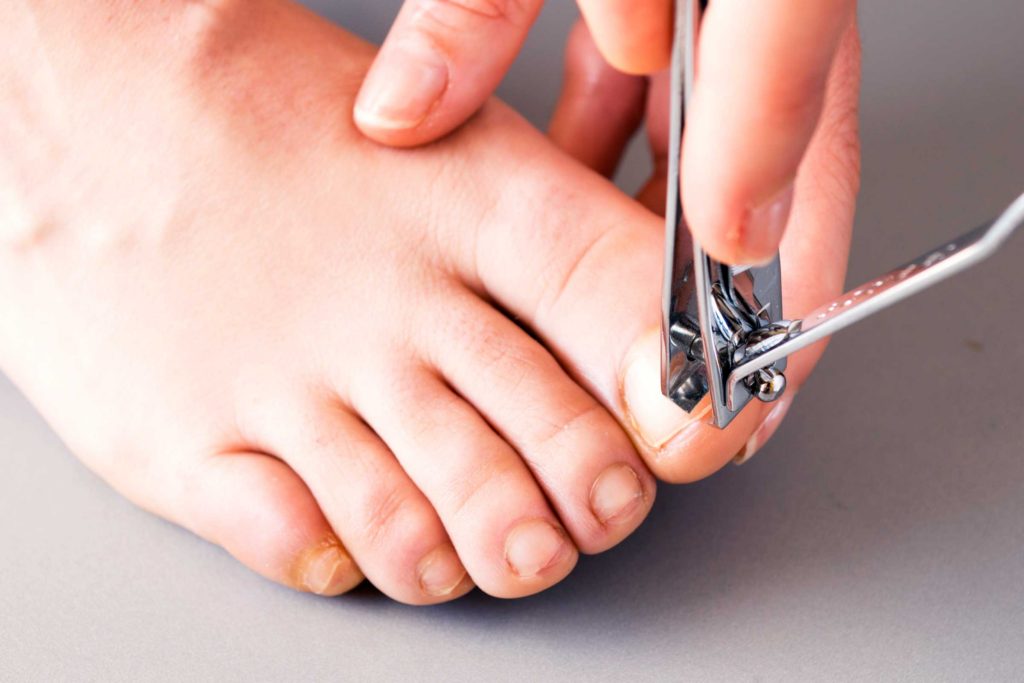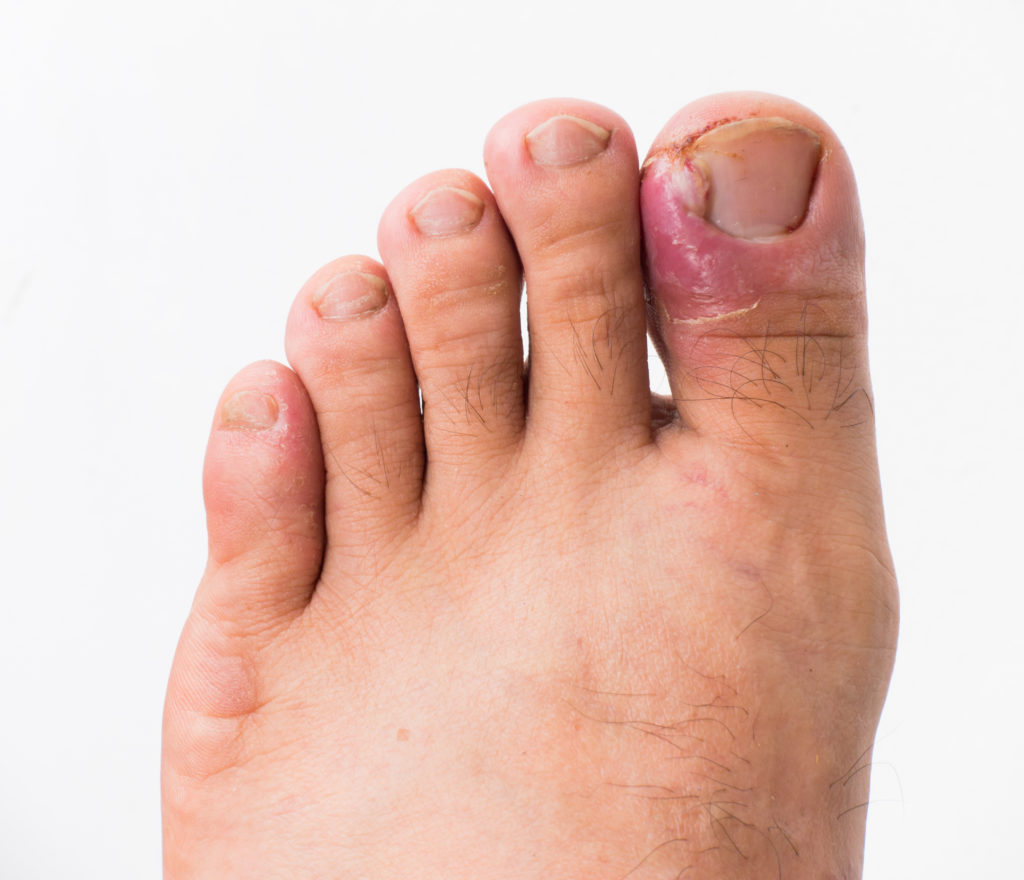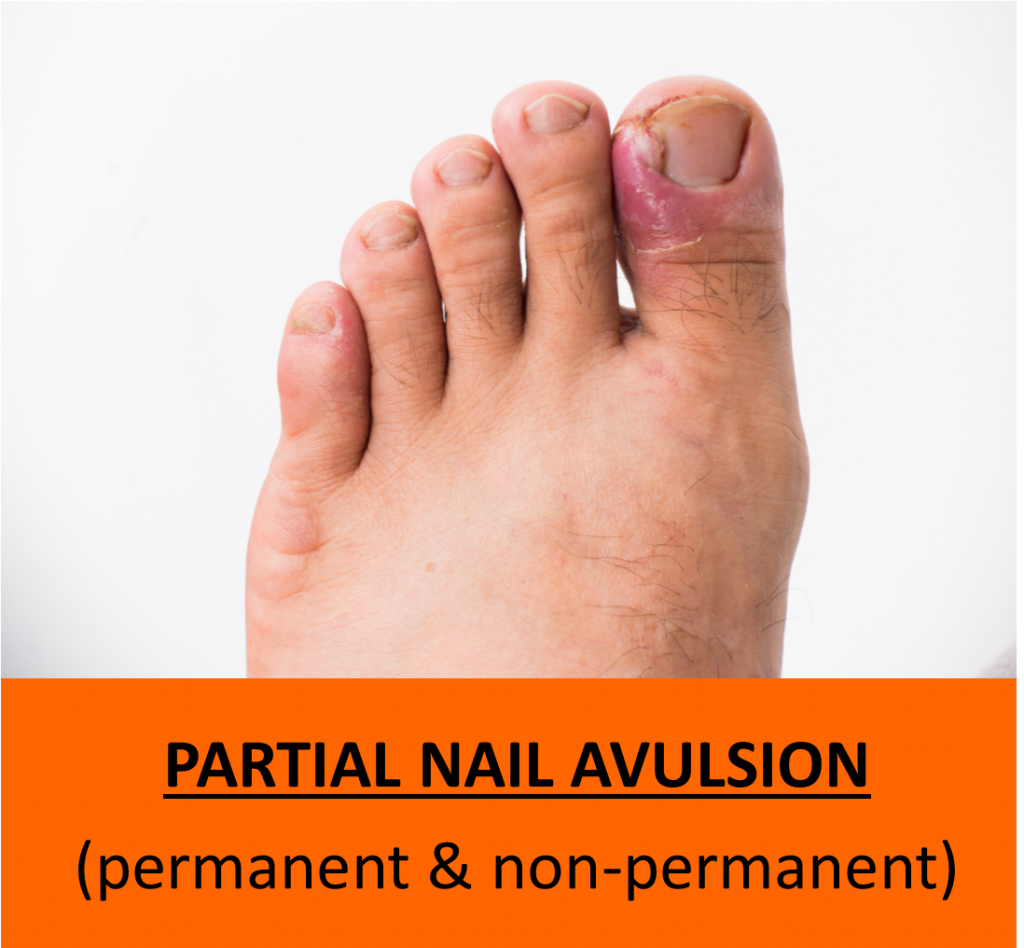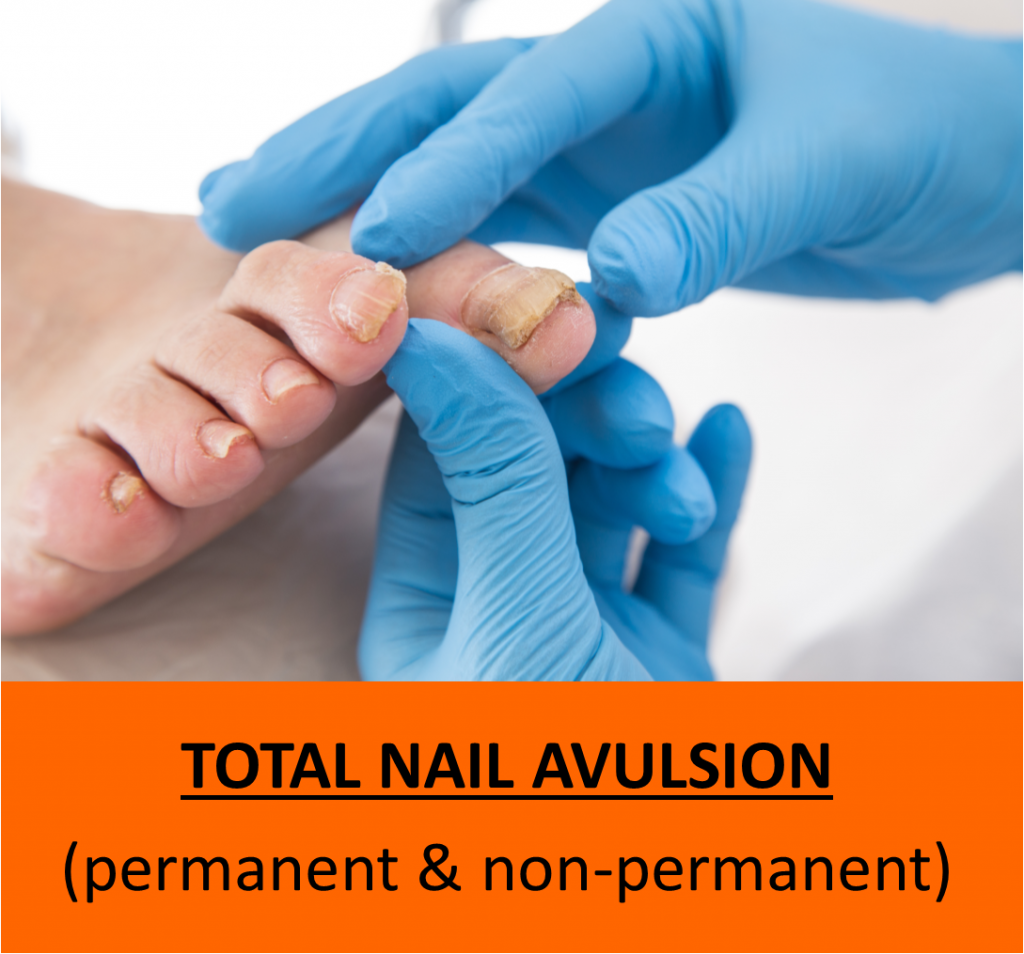What causes ingrown toenails?
 Various factors can encourage ingrown toenails, the most important common of which is an improper nail-cutting technique. Nails should be cut in a straight, clean line with no fraying or split edges and no curves. Curving or ‘rounding’ the edges of the nail down the side can encourage the nail to grow curved down into the skin.
Another common culprit is pulling or picking the nails. Pulling the top of the nail off, instead of cutting them in a straight line with a tool, can leave a spicule at the edge of the nail where it is ripped off, often deep down the side of the nail where it is not visible or felt – until it starts growing and pierces the skin.
Tight footwear creates pressure on the sides of the toes that can push the nail into the surrounding skin. The shape of the nail can also play a role, especially where the nail is particularly involuted or curved. This is often linked to uncontrollable genetic factors that dictate the features and shape of the nail.
Various factors can encourage ingrown toenails, the most important common of which is an improper nail-cutting technique. Nails should be cut in a straight, clean line with no fraying or split edges and no curves. Curving or ‘rounding’ the edges of the nail down the side can encourage the nail to grow curved down into the skin.
Another common culprit is pulling or picking the nails. Pulling the top of the nail off, instead of cutting them in a straight line with a tool, can leave a spicule at the edge of the nail where it is ripped off, often deep down the side of the nail where it is not visible or felt – until it starts growing and pierces the skin.
Tight footwear creates pressure on the sides of the toes that can push the nail into the surrounding skin. The shape of the nail can also play a role, especially where the nail is particularly involuted or curved. This is often linked to uncontrollable genetic factors that dictate the features and shape of the nail.
What are the symptoms?
Ingrown toenails are usually easy to spot because of the marked swelling at the sides of the nail. Common symptoms include: Redness
Redness- Tenderness
- Swelling/inflammation
- Mild to severe pain on touch
- Occasional bleeding at the pierced site
- Yellow/clear discharge if an infection is present
The risk of infection
As with any opening in the skin, ingrown toenails carry with them the risk of infection, which is amplified by the location of the wound down at the feet. This makes seeking appropriate treatment for ingrown toenails very important, especially if you have diabetes, nerve damage or poor circulation, all of which increase your risk for adverse effects. Individuals with these conditions should not attempt to treat their ingrown toenails at home and should seek the help of their Podiatrist as soon as possible.How is an ingrown toenail treated?
Ingrown toenail treatment ranges from a one-off conservative treatment to remove the ingrowing section of the nail and alleviate painful symptoms, or can be corrected permanently. When non-conservatively correcting an ingrown toenail, either a small section of the edge of the nail may be removed (none or a minimal change in appearance, called a partial nail avulsion) or the entire nail may be removed (total nail avulsion). Toenail surgeries are procedures that we often carry out in our clinic as a solution to toenails that have become ingrown, involuted, disfigured, thickened or are affecting a patient’s quality of life, comfort, their risk of injury, or other negative effects. The two main procedures we carry out are the:- Partial Nail Avulsion (PNA), for ingrown toenails
- Total Nail Avulsion (TNA), for a variety of conditions
Diabetes & Ingrown Toenails
If you have diabetes, proper care for ingrown toenails is essential for your health. This is because some of the side effects of diabetes on your feet include numbness/losing the ability to feel and a reduction in blood flow and hence the ability to heal wounds effectively. These effects put you at risk of not being able to detect the telltale pain when a toenail becomes ingrown, as well as not being able to effectively clear any infections or heal the cut. This means the area is vulnerable to ulcerating and developing secondary infections, which are very dangerous to your overall health. Diabetic ulcerations are currently the leading cause of lower limb amputations – aside from traumatic injuries and accidents. If you have diabetes, we’ll assess the sensation in your feet to your overall assessment and discuss the best options for you for both now and the years to come.Kids & Ingrown Toenails
We have the privilege of successfully treating hundreds of kids every year that are otherwise told by their GP’s that nothing can be done aside from taking a course of antibiotics to reduce the risk of infection. This is because we’re well equipped with all the smallest and finest tools to make alleviating ingrown toenails a simple and stress-free process – for both kids and parents alike! We find this to be a relatively common problem at primary school age, especially as kids are growing quickly and wearing a lot of tight shoes that have become too small for them seemingly overnight! You don’t have to walk to develop ingrown toenails either – we’ve treated infants as young as 3 months whose parents noticed redness around their toenail. Even if the toe does not appear very red or present with any swelling, ingrown toenails can still be extremely painful for your baby, child or teenager and won’t go away on its own. To learn more about ingrown toenails and what causes them, click here.
Learn why you should ditch the home remedies for ingrown toenails, click here.
To learn more about ingrown toenails and what causes them, click here.
Learn why you should ditch the home remedies for ingrown toenails, click here.









